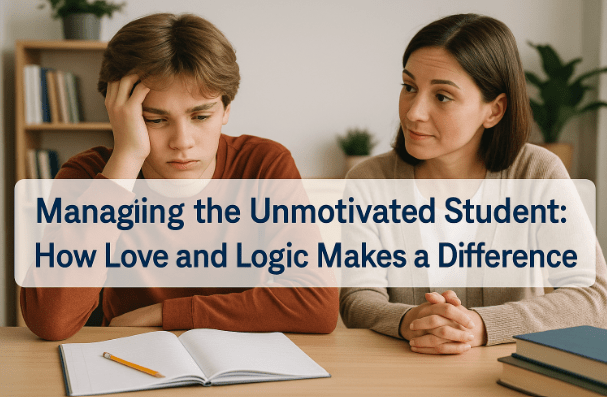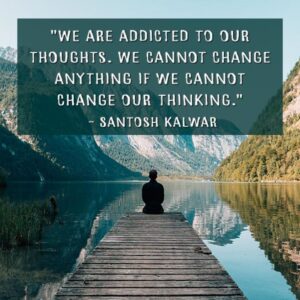
“I’ve tried everything—stickers, rewards, consequences—and nothing seems to work.” If that sentence resonates with you, you’re not alone.
Many educators enter the classroom with a toolbox full of strategies they’ve been taught in training—positive reinforcement, clip charts, behavior contracts. And while those approaches may work for some students, they often fall flat with one particularly challenging group: the unmotivated.
So what happens when rewards don’t inspire, and consequences don’t deter? Enter Love and Logic—a philosophy that shifts the conversation from “how do I get this student to comply?” to “how do I help this student take ownership of their behavior, choices, and future?”
Let’s take a closer look at how Love and Logic helps us understand and support our least motivated learners.
Understanding the “Why” Behind the Wall
Unmotivated students often aren’t lazy—they’re disconnected, discouraged, or dysregulated. According to Dr. Charles Fay in From Bad Grades to a Great Life, students who don’t try are usually overwhelmed by other needs: belonging, autonomy, and emotional safety. When those needs go unmet, the brain deprioritizes learning.
The result? A child who “won’t” try is often a child who can’t—at least not in the current conditions.
Love and Logic’s Human Approach: Build First, Teach Second
Love and Logic teaches that relationships are the foundation of all effective instruction and discipline. As Charles Fay puts it in Teaching with Love and Logic, the most powerful tool we have is making students feel seen, valued, and safe.
Start with these simple Love and Logic techniques:
1. “I Noticed…” Statements
Instead of praise for performance, make personal observations: “I noticed you always wear those green sneakers. I noticed that.”
This builds connection without strings—just simple, sincere attention. The student feels noticed for who they are, not what they do.
2. Neutralize Power Struggles
When a student says, “This is stupid. I’m not doing it,” a traditional response might be a consequence or confrontation.
The Love and Logic response?
“That’s okay. You don’t have to do it now. I’ll be happy to talk with you when you’re ready.”
This calm, non-threatening response avoids feeding the defiance while still maintaining your boundaries.
Shift the Responsibility (Gently!)
Love and Logic doesn’t rescue students—or force them. Instead, it nudges them toward ownership.
Try this:
“I’m happy to help students who are working hard to help themselves. I’ll check back in five minutes to see if you’re ready.”
This communicates:
- You believe in them.
- You’re not angry.
- The choice is theirs.
That subtle shift—from you vs. them to you’re in this together—is often the breakthrough an unmotivated student needs.
What the Research Says
- Studies on student motivation (Deci & Ryan, 2000) show that intrinsic motivation is rooted in autonomy, competence, and relatedness—key themes in Love and Logic.
- Love and Logic’s emphasis on empathy and limits helps students feel safe enough to take academic risks, a crucial ingredient for struggling learners.
In other words, students don’t learn from people they fear—they learn from people they trust.
Small Steps, Big Wins
Here’s a simple 3-day plan to start shifting the dynamic:
- Day 1: Privately offer an “I noticed…” comment to your unmotivated student.
- Day 2: During work time, walk by and whisper a neutral limit: “You don’t have to do it now. I’ll be here when you’re ready.”
- Day 3: Ask, “What’s one thing I can do to help you feel successful today?”
Each step builds trust, respects the student’s autonomy, and signals that you believe in their ability to succeed—even if they’re not quite there yet.
Final Thoughts: It’s Not About Perfection—It’s About Progress
Love and Logic reminds us that every small connection is a seed. Not every student will bloom immediately—but in an environment of empathy, respect, and shared responsibility, even the most unmotivated students begin to take root.
You don’t need to fix them. Just believe in them. Show up consistently. And trust that love and logic will do the rest.


